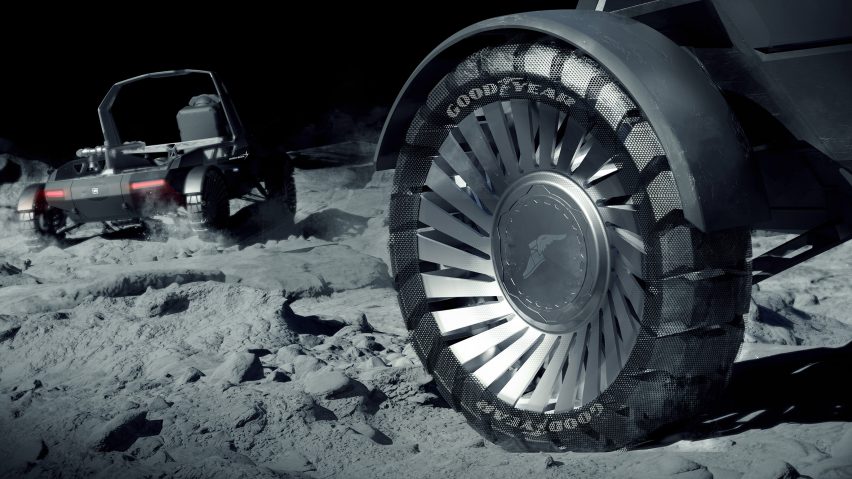Tyre-maker Goodyear has announced it will join aerospace company Lockheed Martin and car manufacturer General Motors to develop a vehicle for NASA's next lunar landing, set for 2025.
Goodyear will develop an advanced version of its airless tyres for the lunar mobility vehicle, which will need to withstand extended use in extreme conditions.
The vehicle is intended for use in NASA's Artemis programme, which aims to land astronauts on the moon for the first time since 1972, including the first woman and first person of colour. The US space agency launched a request for ideas for lunar rovers in 2020.
New lunar tyre to be built to last for years
According to Goodyear, whereas previous lunar rovers were built for just a few days of use, always within five miles of their landing sites, the new vehicle will need to traverse much longer distances and potentially have "years of durability".
It will also need to be able to handle the rugged terrain and withstand temperatures that drop as low as -150 degrees Celsius at night and reach as high as 120 degrees Celsius by day. The vehicle will either be driven by astronauts or operated autonomously without crew.
To develop the lunar tyres, Goodyear will draw on the airless tyres — also known as non-pneumatic tyres — it has used on Earth and tested in vehicles such as delivery robots and autonomous shuttles.
These tyres have a rubber or plastic internal connecting structure that handles well on rougher terrains and doesn't go flat, reducing the need for maintenance and making the product long-lasting.
Goodyear says it has already started testing new tyre concepts in lunar soil test beds, and that the innovations it makes will filter through to its terrestrial products.
"Everything we learn from making tyres for the Moon's extremely difficult operating environment will help us make better airless tyres on Earth," said Goodyear senior vice president, global operations and chief technology officer Chris Helsel.
Group aims to bring commercial product to market
The project also aims to commercialise the lunar vehicle, which will be available for other companies and space agencies to buy.
"NASA's Artemis program to live and work on the Moon has a clear need for lunar surface transportation that we intend to meet with vehicles driven by astronauts or operated autonomously without crew," said Lockheed Martin vice president of lunar exploration campaigns Kirk Shireman.
"We're developing this new generation of lunar mobility vehicle to be available to NASA and for commercial companies and even other space agencies to support science and human exploration," he continued.
"This approach exemplifies NASA's desire for industry to take the lead with commercial efforts that enable the agency to be one of many customers."
Airless tyres have history on the moon
Goodyear has a long history of working with NASA, having previously developed products for the Apollo programme, including the tyres of Apollo 14's hand-pulled Modular Equipment Transporter (MET), which had nitrogen-filled rubber tires.
The first lunar roving vehicle, or "moon buggy", developed by General Motors, went out with the Apollo 15 mission and had airless tires made from wire mesh.
NASA's Artemis programme will also include a moon lander designed by SpaceX, which won the contract to develop the craft last year. In the long term, the programme's goal is to land the first humans on Mars.
Airless tyres have also been developed by Goodyear rival Michelin, which previously partnered with General Motors to bring the products to road vehicles by 2024.

